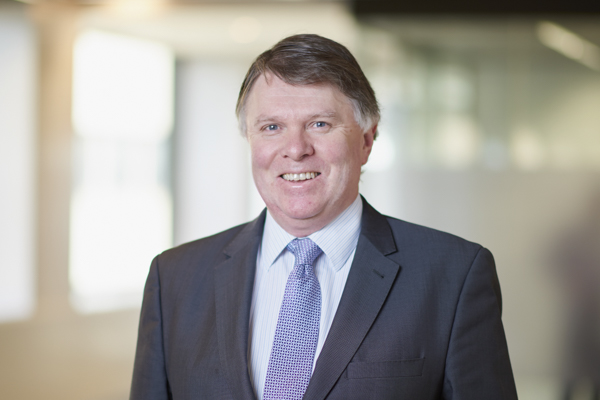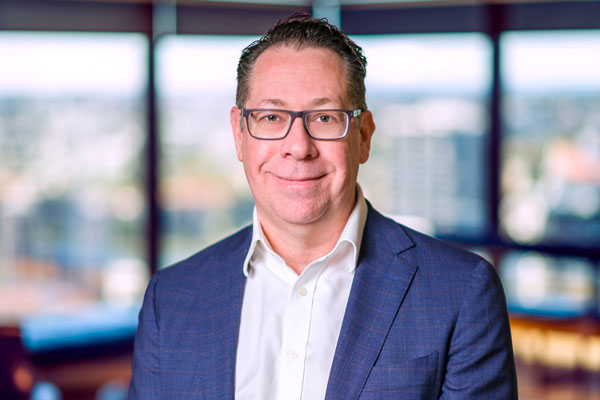The development of a battery energy storage system (BESS) in the Australian market presents a range of regulatory, practical and technical challenges which can put on-time and on-budget delivery of those projects at risk. From our experience connecting hundreds of projects to the National Electricity Grid, we recommend project sponsors focus on three critical factors - Timing, Technology and Transition – to realise a successful BESS project.
Success factor 1: Timing
The timing challenge is significant. Project developers must:
- manage the procurement process for the OEM/EPC/LTSA contractor(s)
- arrange connection agreements with the relevant network service provider
- secure suitable Generator Performance Standards (GPS)
all in a timely and coordinated manner and without one element causing delay to another. In addition, each project must manage state and local government requirements, bankability issues if the project is subject to project finance, and commitments to other stakeholders. Here's our top five tips around timing:
1. Engage with AEMO and the network service provider well in advance of initiating the formal connection application process and be prepared to demonstrate that the project will proceed over a known timeframe.
AEMO and network service providers are currently experiencing extremely high volumes of connection applications, a situation which is likely to get worse over the next few years. Anything that developers can do to make their job easier will help build a constructive relationship and make the connection process easier to manage and control. Engaging early and providing a clear timeline will help AEMO and the network service provider manage this high volume of connection applications. AEMO and the network service provider are usually willing to disclose and discuss current issues impacting connections, this type of proactive and clear engagement can also aid developers in their own planning and resource allocation.
The connection process for batteries is still evolving, and AEMO's and each network service provider's approach is likely to change as a result. The wind farm connections process has been through a similar evolution in recent years, requiring our clients to adopt drafting that accommodates and responds to change, whilst also grandfathering critical issues. We expect a similar approach will be required for BESS projects in coming years. An understanding of the lessons learned from the wind farm sector is likely to help the successful progression of the BESS connection.
2. Ensure the battery supplier agrees to provide all of the model, source code and other technical data required by AEMO and the network service provider.
Project developers need to conduct network studies in order to develop performance standards for the review and approval of AEMO and the network service provider. The battery supplier needs to help with this process, and it is important to obtain their early commitment to provide that assistance and to provide all of the technical information and data required by AEMO and the network service provider. Problems with models and data have delayed many connection processes.
This issue is complicated by the fact that the connection process is likely to progress in parallel with the procurement of a battery supplier (who may only be a subcontractor to the proposed EPC contractor rather than someone the project developer is contracting directly with). Delays can occur if the two streams are not properly co-ordinated or if the supplier's role in helping meet the AEMO and network service provider requirements is not properly understood.
3. Develop a strategy for maintaining competitive tension in during your connection negotiations.
It is now possible in most jurisdictions to issue a tender for the contestable portion of the infrastructure required to connect a BESS project to the transmission network. Whilst the non-contestable portion of the connection infrastructure must still be contracted to the incumbent network service provider, the opportunity to undertake the entire connection process can be used to generate a more favourable total project outcome– particularly where the connection project can be managed as one combined and co-ordinated project with a single point of accountability.
4. Engage with the EPC contractor and technology providers as early as possible concerning the performance standard requirements.
EPC contractors and technology providers have learnt a major lesson from the early Australian solar projects: not to take on the time and cost risk associated with AEMO interactions. As such, they are unlikely to sign an EPC contact without the performance standards being approved. This is challenging in that it is not possible for a project developer to obtain the performance standards without knowing the battery supplier.
A previous problem scenario in the solar space involved a developer engaging consultants who then lodged the performance standards application on the basis of certain technology, subsequently forcing the EPC contractor to accept those performance standards based on that technology rather than the EPC contractor exercising its own skill to design the BESS. Similar approaches are unlikely to be viewed favourably in the market today. Project developers need to be aware of the range of alternative procurement structures to overcome such issues.
5. Agree appropriate performance guarantees that counter the consequence of battery degradation and its effect on timing in the construction phase.
Batteries start to degrade as soon as they are used. As such, EPC contractors and technology providers will be loath to start testing and commissioning until all elements of the project, including the connection point, are ready. They can't improve the battery's output after testing has commenced. This runs counter to energy generation projects, where such improvements are possible and the ability to sell power generated during testing and commissioning mitigates the extra time that the contractor may take to deliver those improvements.
Success factor 2: Technology
Choice and availability of technology, changes in technology, familiarity with technology – all will influence the success of a project. Consider our four tips for success:
1. Anticipate delay.
New technology means new models and performance data. The project developer and battery supplier will need to satisfy AEMO that new models and data accurately reflect the performance of the facility and meet AEMO's requirements. This can be a slow and frustrating process, particularly for overseas battery suppliers not familiar with the AEMO process.
2. Weigh up the benefit of moving to rapidly changing technology against the risk of reopening the performance standard approval process.
Moving early can provide increased certainty and protection against rule changes and the impacts of other connection projects. However it can increase the chance that technological advances make a different choice of equipment more desirable after GPS approval has been secured.
The pace of technological change means that new and improved batteries and associated equipment are likely to be available before procurement and construction decisions have been finalised, but after GPS approval has been received. Maintaining optionality and flexibility has become a critical issue for connection processes and needs to be carefully managed with AEMO to minimise the potential for delay, particularly where the facility has the potential to provide broader network support.
The earlier the GPS is approved by AEMO, the sooner the project will achieve 'committed' project status in AEMO's connection system. AEMO assumes that committed projects are connected to the network and operating when it considers performance standard and system strength issues relating to subsequent connection projects. Transitional arrangements applying to rule changes usually grandfather (i.e. preserve the application of the previous rule or standard) to committed projects, and in some cases to projects that have lodged their application to connect (which by definition occurs prior to the approval of the GPS).
3. Be prepared for the technology provider to be the EPC contractor.
There are less technological and contractual interface risks if the technology provider is also the EPC and LTSA contractor. The only real issue is whether the technology provider has the contracting experience on the ground in Australia to hold both roles. This should be determined in the EOI process.
4. Have access to the technology IP rights in the approval process and operations phase.
The approval process will require a lot of data. Traditionally contractors have provided that data without any contractual obligation because they are commercially incentivised to do so at that stage of the process. This approach is fine as long as nothing goes wrong, but is troubling from a legal and risk perspective. We recommend addressing this issue by either entering into a pre-contract agreement or locking in through the RFT tender conditions. Also, during the LTSA operations phase, guard against risks associated with a provider's insolvency by using escrow agreements to secure source code protection and access to operating software.
Key success factor 3: Market transition
Participants in the renewables, storage and transmission space in Australia are working in a state of transition and ongoing market/regulatory reform. With the Energy Security Board's plans and each state's own agenda to consider, there is clearly more change to come. Understanding these changes and managing the opportunities and challenges they present is vital. Our top three tips for success:
1. In addition to the wholesale spot market and the traditional frequency control ancillary services markets, consider whether the project also targets proposed new markets, or looks to arbitrage between all of them. This has a potential near-term impact on equipment selection.
The Energy Security Board's market reform proposals were accepted by all jurisdictions earlier this year, so we now have a roadmap for a new market from now to 2025 and beyond. The reforms will open up new markets for batteries, and dovetail in with a related project that the AEMC is running to streamline the integration of batteries into the NEM.
2. Black boxing of performance settings by the OEM contractor is not an excuse for market non-compliance.
As the coal fleet retires, batteries will be increasingly important to supply system security and reliability. They will be increasingly crucial to AEMO's ability to manage the system. The AER is currently targeting non-compliance in the ancillary services (FCAS) market and we do not expect this to change as the new system security and reliability markets commence. This is an important point to consider in appointing and agreeing terms with an OEM.
3. Regulatory processes in relation to battery network charges should be carefully monitored.
The AEMC has just released a detailed rule change designed to expressly deal with storage facilities such as batteries and pumped hydro. One of the issues that was considered during the rule change process was whether batteries should be charged network charges like load customers when they are taking electricity from the network for charging purposes. Under the new rule, electricity distributors will continue to charge network charges to batteries when they are charging from the network. However, it is expected that new tariffs will be developed over the next 2 years designed to take into account the impacts of batteries on the network. In the case of transmission, no specific changes have been made to the rules and the AEMC has implicitly endorse the flexible approach that has been adopted to date by transmission network service providers with respect to charging network charges to batteries.
Understanding whether there will be a requirement to pay network charges and how much those network charges are likely to be an important consideration when assessing the expected returns from the project and, if relevant, obtaining financing. The outcome could potentially lead to:
- a different battery charging configuration
- a re-think as to whether the battery would be prepared to offer network support services
- a change to the availability or terms of any finance, or
- an acceleration of the timing for the submission of an application to connect.







